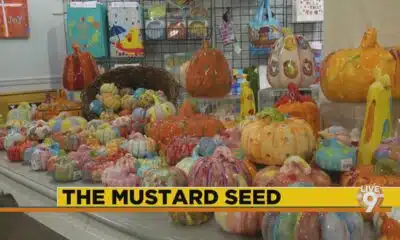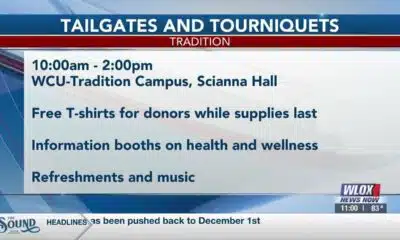Our Mississippi Home
Sourwood – Great Honey and Fall Color
SUMMARY: Sourwood (Oxydendrum arboreum) stands out in landscapes with its arching habit, white flowers, and vibrant fall foliage. Known also as Sorrel Tree and Lily-of-the-Valley Tree, it has acidic leaves and elegant, white inflorescences. Scientifically named for its acidic properties (oxys) and the term for tree (dendron), Sourwood has various uses. Native Americans used its parts for medicinal remedies, and its wood is used for handles. Sourwood honey, produced mainly in the Appalachian region, is highly valued. Despite its limited presence in the deep south, its nectar supports pollinators, and the tree remains a favored native species for its beauty and adaptability.
The post Sourwood – Great Honey and Fall Color appeared first on ourmshome.com
Our Mississippi Home
A Sanctuary in Goodman: The Magic of the Public Library
SUMMARY: In Goodman, Mississippi, the small library housed in a former church transformed under Rachel Floyd’s leadership since 2021. Despite the town’s high poverty and limited opportunities, the library has become a vibrant sanctuary for children. Its unique features, like a spiral staircase leading to a kids’ area and displays of local art, create a welcoming, lively environment. Rachel’s dedication to diverse programs—storytimes, crafts, STEAM clubs—boosted book checkouts from 83 to 823 over three years. More than a library, it is a community hub where children feel valued, inspired, and free to explore, learn, and grow.
The post A Sanctuary in Goodman: The Magic of the Public Library appeared first on ourmshome.com
Our Mississippi Home
Family of Curious George Creators to Visit de Grummond in Hattiesburg
SUMMARY:
The de Grummond Children’s Literature Collection at The University of Southern Mississippi houses the papers of H.A. and Margret Rey, creators of Curious George. From October 23-28, the Rey family visits Hattiesburg for a reunion celebrating their legacy with exhibitions, children’s activities, a musical, and a documentary screening. The Curious George: Original Works on Paper exhibit features rare Rey materials, including original art and letters. The collection, founded by Dr. Lena de Grummond, holds manuscripts of over 1,400 authors and illustrators. The Reys created Curious George during their 1940 flight from France, later publishing the beloved series in New York.
The post Family of Curious George Creators to Visit de Grummond in Hattiesburg appeared first on ourmshome.com
Our Mississippi Home
Rolling Through History: The Comfort and Culture of Dumplings
SUMMARY: Dumplings are a comforting, versatile food with many variations worldwide. A classic Southern recipe uses simple flour and water dumplings simmered in chicken stock made from roasted chicken bones and sautéed mirepoix. Alternatives include using biscuit or Bisquick mixes for quick dumplings. Frozen dumplings are convenient but often less favored. Dumplings can be stuffed, such as Chinese potstickers or Eastern European pierogi, with fillings like pork, beef, vegetables, and cheese. Southerners also enjoy deep-fried dumplings. Originating in China during the Eastern Han dynasty, dumplings spread globally via trade routes. They are best enjoyed with flavorful dipping sauces of soy, garlic, vinegar, and chili oil.
The post Rolling Through History: The Comfort and Culture of Dumplings appeared first on ourmshome.com
-
News from the South - Kentucky News Feed6 days ago
Lexington man accused of carjacking, firing gun during police chase faces federal firearm charge
-
News from the South - Alabama News Feed6 days ago
Zaxby's Player of the Week: Dylan Jackson, Vigor WR
-
The Center Square7 days ago
California mother says daughter killed herself after being transitioned by school | California
-
News from the South - Arkansas News Feed7 days ago
Arkansas medical marijuana sales on pace for record year
-
Local News Video7 days ago
William Carey University holds 'tailgates and tourniquets' blood drive
-
News from the South - North Carolina News Feed5 days ago
What we know about Charlie Kirk shooting suspect, how he was caught
-
News from the South - Missouri News Feed7 days ago
Local, statewide officials react to Charlie Kirk death after shooting in Utah
-
Local News6 days ago
US stocks inch to more records as inflation slows and Oracle soars











































